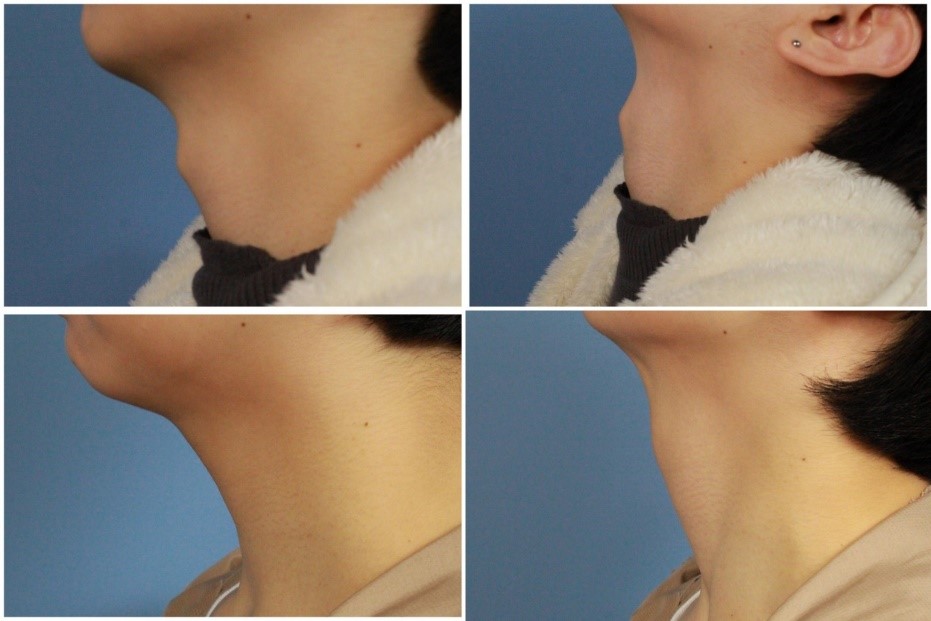:::醫療新聞
:::
Scarless Thyroid Cartilage Reduction
Plastic and Reconstructive Surgeon: Dr. Pin-Keng Shih
China Medical University Hospital (Taipei, Hsinchu, Taichung)
Prominent Adam’s apple (thyroid cartilage) is an important masculine characteristic. It is indeed quite troublesome for women with obvious appearance of Adam’s apple or those who want a feminized neck. When the thyroid cartilage is shaped in adulthood, even if the transgender hormones are difficult to reshape the cartilage. Therefore, the thyroid cartilage reduction surgery becomes the only option.
In the past, most of the Adam’s apple reduction surgery was performed via an external incision wound. Although the wound was mostly hidden at the junction of the chin and neck, the scar was still be widen by the subsequent neck activities. The endoscopic Adam’s apple reduction surgery provide a clear surgical view, invisible surgical scar, and early soft tissue recovery, which will be another alternative.

(Upper: perioperative pictures. Lower: follow-up. )
Indications for surgery:
Surgical feminization of the prominent Adam's apple.
Surgery goals and methods
1. Wound location: the junction of the lower lip and the teeth.
2. Anesthesia: General anesthesia.
3. Operation time: about 4-6 hours.
4. Goal of surgery: smoothing of thyroid cartilage margins to reduce masculine appearance.
Post-operative care
Circumferential elastic band used for a week to assist the subcutaneous soft tissue healing.
Advantages and disadvantages of surgery
Advantages: lowering the chance of external scar formation.
Disadvantages: longer operation time and possible postoperative complications.
Possible complications
1. Hoarseness or weak voice: It may be related to the excessive removal of thyroid cartilage. To avoid this risk, the position of the vocal cords will be confirmed repetitively with an endoscope during the operation.
2. Subcutaneous emphysema: The carbon dioxide is injected subcutaneously for a working space creation. Some of the carbon dioxide accumulation will alleviated in one week follow-up.
3. Subcutaneous bruising after surgery: improvement in a month.
4. Paresthesia of the lower lip: The mechanism resulted from the inferior alveolar nerve involved during the operation. About 90% of the people will improve at one year follow-up.






